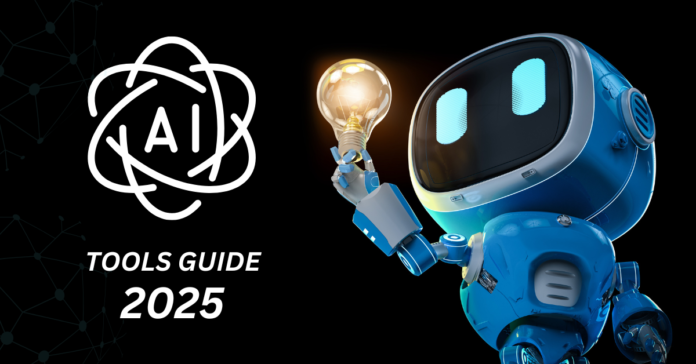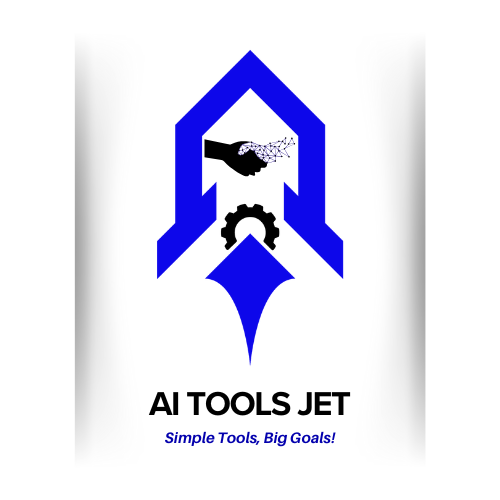Artificial Intelligence (AI) has gone from an idea to a revolutionary technology within a short while. From chatbots like ChatGPT with AI capabilities to marketing, security, and analysis automation tools, AI is an integral component of businesses today. Firms implement AI tools for efficient running, enhanced engagement, and automation. In order to best utilize AI tools, knowing how they operate and how to use them in maintaining your company competitive is significant.
What Is AI?
AI, which is artificial intelligence, refers to computer programs designed to perform activities that normally require human intelligence. Some of these activities include speech recognition, text generation, decision-making, and solving problems. AI seeks to emulate human thinking and increase efficiency via automation.
How Does AI Work?
An AI mainly works through an array of algorithms and machine learning models that do enormous processing of data. The machines are said to learn from their previous experience, develop over time, and analyze patterns. The more data the model works with, the more accurate its predictions and returns.
How Do AI Tools Work?
AI tools operate using machine learning, natural language processing (NLP), and computer vision, which are deployed to analyze data and derive conclusive insights. Developers train these tools by feeding them massive datasets, enabling them to recognize patterns and provide precise outputs. All these functions may include chatbots that assist customers and automation tools used to smoothen functions in businesses.
Top Benefits of AI Tools for Businesses
Artificial intelligence tools are becoming a necessity for all companies across the world, bringing novel solutions to save time and improve productivity. Following are some of the major advantages of using AI tools.
1. Saves Time & Resources
AI performs repetitive and time-consuming tasks, allowing business to focus on priority tasks. Instead of letting skilled employees perform the task of analytics or data processing, companies can use AI programs to complete the tasks quickly and efficiently.
For example, Tavus is a video personalization artificial intelligence-powered solution that allows businesses to personalize customer engagement at scale. It can convert one video template into thousands of personalized messages, relieving developers of hours of work. With the power of artificial intelligence-powered automation, companies can provide personalized experiences without human intervention.
2. Grow Productivity
AI-based automation directs employees to concentrate on higher-value tasks instead of repetitive processes. AI tools for customer support, data management, and workflow automation will increasingly lead to higher productivity and better results when employed to augment human resources.
3. Its Ability to Adapt Continuously Improves
AI tools learn from data and user interaction and continuously develop to become better. This means that a business can read trends, make the best decisions, and offer customized experiences.
For instance, AI-enabled analytical tools may notice a change in customer behavior and recommend updated strategies based on real-time observations. This kind of insight empowers companies to make informed decisions and helps improve business outcomes.
AI Tool Examples: How Businesses Use AI Technology
When people hear about AI software, they usually imagine chatbots like ChatGPT or advanced data analysis software. However, AI technology is nowadays incorporated into almost all business processes, from marketing to customer support and beyond. Here are some of the strongest AI software in use today.
AI Video Generation
How It Works
AI video generation software uses advanced algorithms and user input to create videos. They are transforming companies by automating email marketing, sales, and customer learning content.
Whereas other AI-driven video solutions rely on robotic voice-overs and avatars, Tavus is unique. It allows businesses to produce thousands of personalized videos from a single recorded template with real human voice and expressions. This eliminates the hassle of time-consuming manual recording without compromising on a natural, interactive viewer experience.
When to Use AI Video Generation
AI video making is a business disruptor, creating personalized, engaging videos in massive numbers. Here are some of the most widespread applications of AI-based video technology:
- Customer Onboarding Emails — Greet new customers with personal videos and introduce some humanity into onboarding.
- Hiring Process — Streamline hiring with personal video messages for candidates.
- Sales Outreach — Raise conversion rates through sending personalized video pitches to potential customers.
- Marketing Campaigns — Supplement email marketing and social campaigns with compelling video content.
- Customer Retention — Strengthen relationships by delivering targeted follow-up and loyalty reward videos.
Data Analysis
How AI Data Analysis Works
It may take a long time and be an expensive task to analyze large datasets manually. These AI-based data analysis tools quickly sift large volumes of data, sorting and spotting patterns, and providing intelligent insights. It can also do predictive analysis, enabling businesses to anticipate trends and make data-based decisions in security, marketing, and customer behavior.
When to Use AI Data Analysis
AI-enabled data analysis can be applied across many business areas, including:
- Customer Data Insights – Understand consumer behavior and preferences for enhanced service.
- Access Control & Security – Monitor and analyze access data to prevent unauthorized activities.
- Fraud Detection – Identify suspicious transactions that can lower/set aside financial risks.
- Social Media Monitoring – Monitor brand sentiment, trends, and audience engagement.
- Marketing Campaign Optimization – Identify target audiences and personalize content for sending.
By employing AI for data analysis, businesses could save time while making more informed decisions, as well as have a competitive advantage in an increasingly data-centered world.
AI Writing Tools
How They Work
AI writing tools are literally capable of cranking out human-like text by employing natural language processing (NLP) techniques. With vast amounts of data to draw from, these tools are able to attain context-appropriate tone and sometimes sensitive language.
When to Use AI Writing Tools
- Nicely crafted social media captions – Billions of posts can be published in the blink of an eye.
- Editing and proofreading – Grammar, clarity, and readability will be improved.
- Drafting website content – Cuts down on copy-writing time on landing pages.
- Blog Topic Ideas – Suggests new, in-the-trend material.
AI Image Creation
How It Works
These AI image generators rely on text or image inputs to create attention-grabbing visuals that make content creation quicker and easier.
When to Use AI Image Tools
- Marketing Materials: Ads, banners, and other graphics design.
- Social Media Content: Eye-catching visuals and videos.
- Branding Inspiration: Logo, mockups, and design assets creation.
Automation Tools Workflows
How do they work?
Artificial Intelligence can automate routine and repetitive tasks performed throughout various departments. thereby diminishing manual effort and enhancing accuracy.
When to Automate Workflow
- Extraction of Data-Able to pull out important information from large data sets.
- Invoice Processing-Able to automate documents pertaining to finance.
- Scheduling of Appointments-Set up meetings without manual effort.
- Error Checking-In able to detect problems on production lines.
- Processing Orders-Making eCommerce proceed smoothly.
Speech Recognition & Analysis
How It Works
AI-powered speech recognition converts spoken language into text and can analyze conversations for insights.
When to Use Speech AI
- Meeting Transcriptions – Convert discussions into text.
- Customer Service Analysis – Evaluate calls for quality control.
- Automated Documentation – Record and store important conversations.
AI-Powered Recommendation Engines
How They Work
AI recommends to users products or content based on previously demonstrated behavior patterns (purchases, clicks, searches) to increase user engagement.
When to Use Recommendation AI
- E-commerce Upselling-Product suggestions based on existing purchases.
- Content Personalization-Get recommendations for blogs, videos, or articles for the user.
AI Personal Assistants
How They Work
AI personal assistants merge NLP and automatic workflows to carry out assigned tasks and offer support.
When to Use AI Personal Assistants
- Schedule Appointments-Manage calendars.
- Task Automation-Eliminate administrative tasks.
- Client Support-Offer both instant and automated replies to frequently asked questions.
AI Chatbots
How They Work
AI chatbots use NLP to communicate with users and can respond to questions and provide support in real-time.
When to Use AI Chatbots
- Website Support-Answer frequently asked questions by website visitors.
- Automating Customer Interaction-Use chatbots with answers to handle mundane conversations.
- Lead Generation-Capture contact information for new client follow-ups.
More About AI Tools
AI tools can be very intimidating, especially for beginners. To avoid wasting time, here are the most common answers to frequently asked questions about AI technology.
What Exactly Is AI Used For?
Artificial Intelligence (AI) enables machines to perform tasks that are normally achieved with great difficulty by human intelligence. It learns from data to enable functions like:
- Problem solving
- Language processing and generation
- Video and image recognition
- Speech recognition
- Data organization and prediction
Is ChatGPT an AI Tool?
Yes, ChatGPT is a generative AI tool producing human-like text based on user prompts. It is useful for:
- Writing blog posts, emails, and reports
- Answering questions and summarizing content
- Generative supply of creative ideas for marketing and branding
Which AI Tool Is the Best?
The best AI tools depend on individual needs:
- For AI writing and summaries → ChatGPT
- For generating AI video → Tavus
- For process automation → Zapier AI
- For data analysis → Tableau AI
- For image creation → DALL·E and Midjourney
Why Tavus Is the Best AI Tool for Marketing
Brands that want to vehicle personalized video marketing at scale can use one of the most effective AI-powered solutions-Tavus. This is how it works:
- Mass video personalization – Upload one video and generate thousands of personalized versions.
- Seamless integration – Feed AI-generated videos directly into your apps.
- Real-time AI Digital Twin – Create interactive experiences for your users.
- Saves time and drives productivity – Video creation is fully automated with no extra overhead.
With Tavus, developers can up engagement while focusing on their core product because AI does the rest.
Automate Video Personalization with Tavus
Tavus makes it easy to automate all this. By using a single pre-recorded video template, customers can set up programmatic triggers that generate and send personalized videos automatically based on customer behavior — no extra effort required.
Furthermore, Tavus works seamlessly with tools like Salesforce and Mailchimp, and companies can set up event-based triggers. That way, once the system is in place, AI handles personalization and delivery — so you can focus on growing your business.
Final Thoughts
AI tools are revolutionizing industry automation, streamlining tasks, and improving efficiency. The right AI tool is available, be it for writing, video, automation, or analytics. Let AI work on your behalf, and let your productivity scale new heights.


